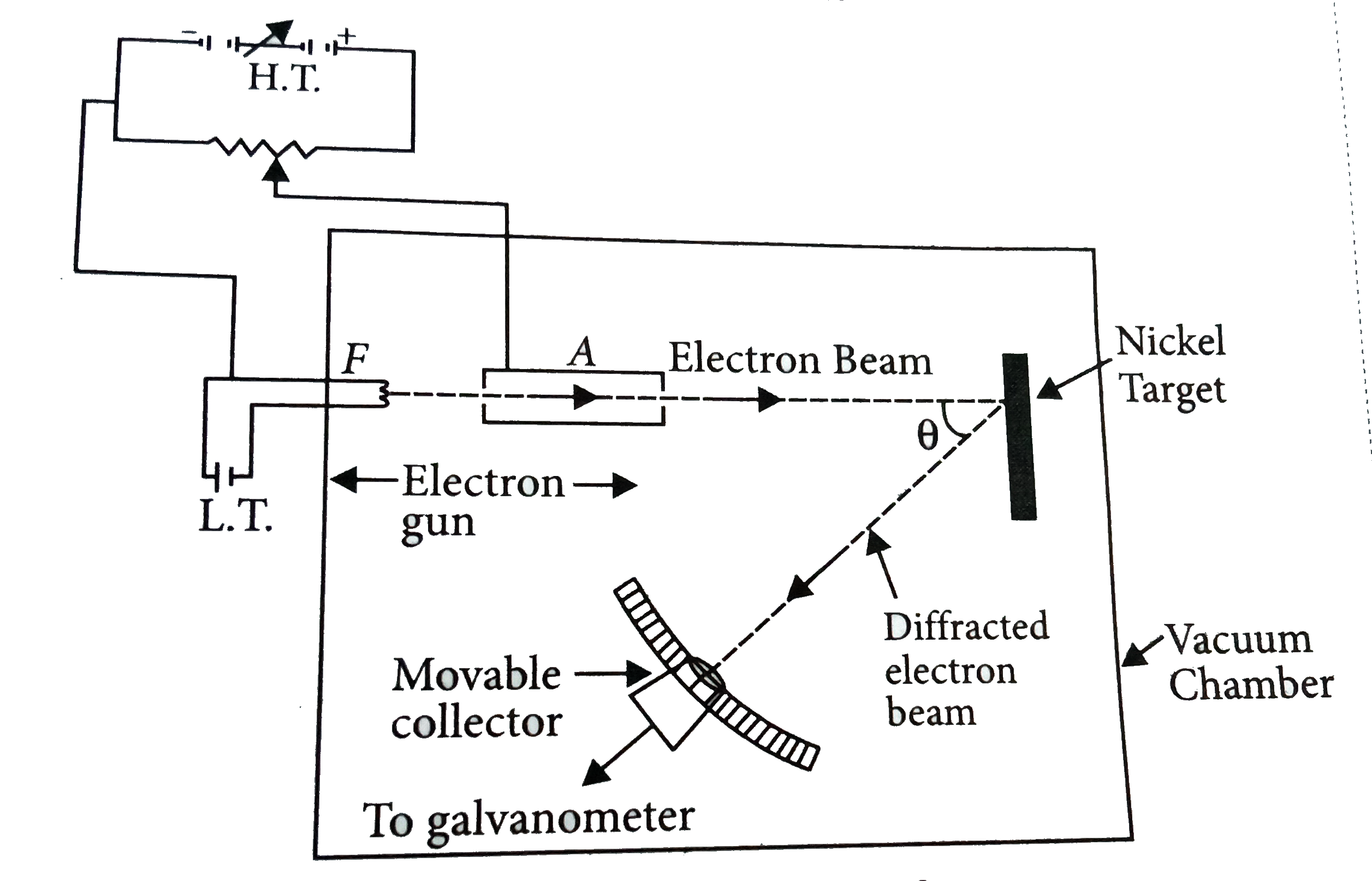Complete Solutions to EXEMPLAR PROBLEMS of chapter DUAL NATURE OF RADIATION AND MATTER of Class 12 book with complete answers and questions
| Class 12 | PHYSICS |
| Chapter | DUAL NATURE OF RADIATION AND MATTER |
| NCERT FINGERTIPS | EXEMPLAR PROBLEMS |
| Number Of Questions | 8 |
| Academic Year | 2023-24 |
A particle is droped from a height H. The de-broglie wavelength of the particle as a function of height is proportional to
View SolutionThe wavelength of a photon needed to remove a proton from a nucleus which is bound to the nucleus with 1MeV energy is nearly
View SolutionConsider a beam of electrons (each electron with energy `E_(0))` incident on a metal surface kept in an evacuated chamber. Then
View SolutionConsider figure. Suppose the voltage applied to A is increased. The diffracted beam will have the maximum at a value of `theta` that

View SolutionA proton, a neutron, an electron and an `alpha`-particle have same energy. Then their de-Broglie wavelengths compare as
View SolutionAn electron is moving with an initial velocity `vecv=v_(0)hati` and is in a magnetic field `vecB=B_(0)hatj`. Then it's de-Broglie wavelength
View SolutionAn electron (mass m) with an initial velocity `v=v_(0)hat(i)(v_(0)gt0)` is in an electric field `E=-E_(0)hat(l)(E_(0)="constant"gt0)`. Its de-Broglie wavelength at time t is given by
View SolutionAn electron of mass `m` with an initial velocity
`vec(v) = v_(0) hat`(i) `(v_(0) gt 0)` enters an electric field
`vec(E ) =- E_(0) hat (j)` `(E_(0) = constant gt 0)` at `t = 0` . If `lambda_(0)` is its de - Broglie wavelength initially, then its de - Broglie wavelength at time `t` is
View Solution
EXEMPLAR PROBLEMS questions and complete solutions for chapter DUAL NATURE OF RADIATION AND MATTER of MTG PHYSICS (ENGLISH) of Class 12
All Exercises from NCERT FINGERTIPS Class 12 PHYSICS DUAL NATURE OF RADIATION AND MATTER
- ASSERTION & REASON CORNER
- Assertion And Reason
- DAVISSON AND GERMER EXPERIMENT
- EINSTEIN S PHOTOELECTRIC EQUATION : ENERGY QUANTUM OF RADIATION
- Einstein'S Photoelectric Equation : Energy Quantum Of Radiation
- ELECTRON EMISSION
- EXEMPLAR PROBLEMS
- EXPERIMENTAL STUDY OF PHOTOELECTRIC EFFECT
- HIGHER ORDER THINKING SKILLS
- INTRODUCTION
- NCERT Exemplar
- PARTICLE NATURE OF LIGHT : THE PHOTON
- PHOTOELECTRIC EFFECT
- WAVE NATURE OF MATTER